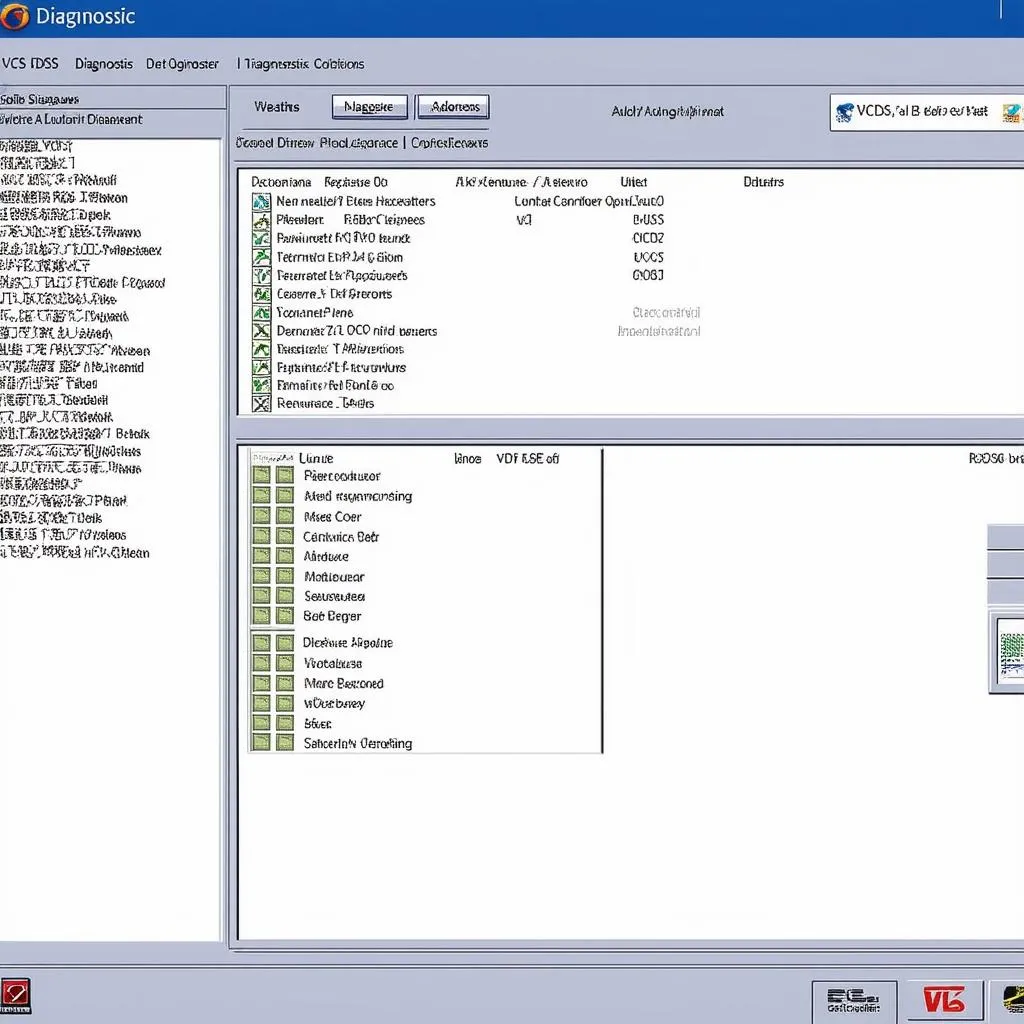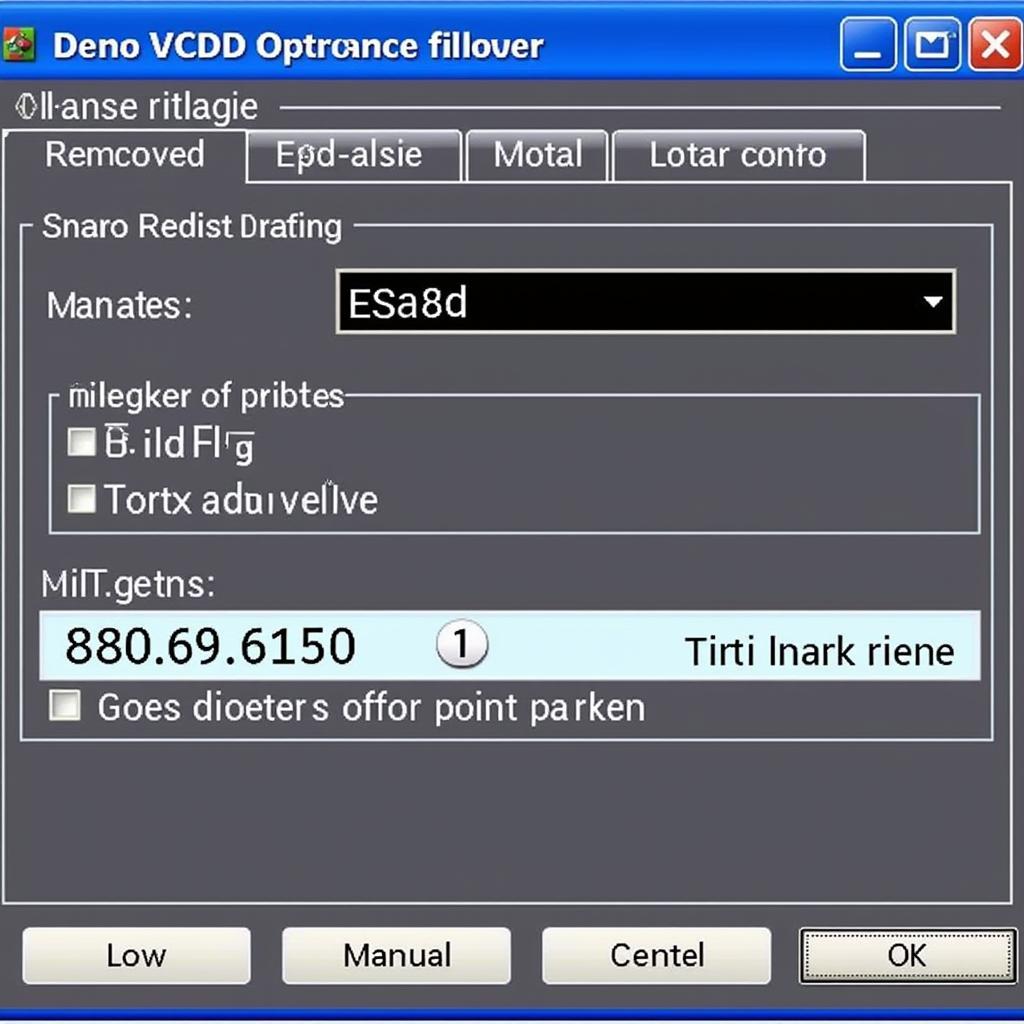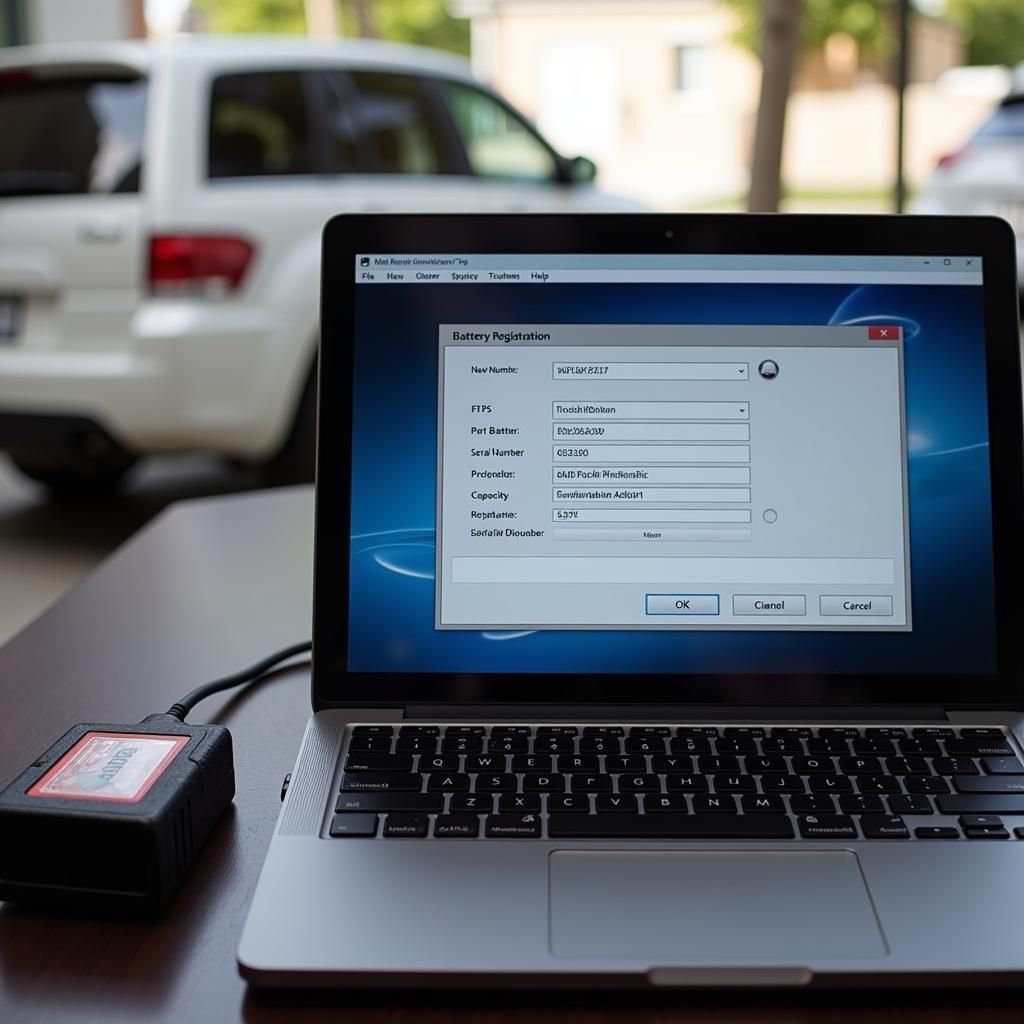A VCDS transmission adaptation reset, also known as a gearbox or DSG reset, is a procedure that recalibrates the transmission control unit (TCU) in your Volkswagen, Audi, Seat, or Skoda vehicle. This process optimizes gear shifting, potentially resolving issues like rough shifting, delayed engagement, or slipping.
What is VCDS?
Before diving into the reset procedure, let’s clarify what VCDS is. VCDS, formerly known as VAG-COM, is a powerful diagnostic and programming software for VAG (Volkswagen Audi Group) vehicles. It interfaces with your car’s onboard computer systems, enabling you to access a wealth of information and perform various functions, including transmission adaptation resets.
Think of VCDS as a direct line of communication to your car’s brain. It allows you to read and clear fault codes, monitor live data, and make adjustments to various systems, including the transmission.
 VCDS software interface
VCDS software interface
Why Perform a Transmission Adaptation Reset?
Over time, your car’s transmission learns your driving style and adapts its shifting patterns accordingly. However, these learned adaptations can sometimes lead to undesirable shifting behavior. A reset essentially wipes the TCU’s memory, allowing it to relearn your driving style from scratch.
Here are some common reasons why you might need a VCDS transmission adaptation reset:
- Rough Shifting: Jerky or abrupt gear changes.
- Slipping: The feeling of the transmission momentarily disengaging.
- Delayed Engagement: A noticeable lag between shifting gears and the transmission responding.
- Fault Codes Related to Transmission Adaptation: These codes may indicate a need for a reset.
How to Perform a VCDS Transmission Adaptation Reset
Important Note: While the procedure outlined below provides a general guideline, the specific steps may vary slightly depending on your vehicle’s model and year. Always refer to the factory repair information for your car.
Disclaimer: This information is for educational purposes only. Performing procedures on your vehicle without proper knowledge and training can potentially cause damage.
Here’s a simplified guide:
- Connect: Connect your VCDS interface to your vehicle’s OBD-II port and launch the VCDS software on your computer.
- Select Control Module: Navigate to “Select Control Module” and choose “Transmission.”
- Basic Settings: Go to “Basic Settings.”
- Adaptation Channels: Depending on your specific transmission model, you’ll find adaptation channels related to clutch engagement points, shift points, and other parameters.
- Reset Procedure: Follow the on-screen prompts within VCDS to perform the reset. This typically involves cycling through different gears while keeping the engine running.
 Car on a lift in a workshop.
Car on a lift in a workshop.
FAQs about VCDS Transmission Adaptation Reset:
Q: How often should I perform a transmission adaptation reset?
A: There’s no set schedule. It’s often recommended after any work on the transmission or if you experience shifting issues.
Q: Will a reset void my warranty?
A: Using VCDS or similar diagnostic tools shouldn’t void your warranty. However, if you’re unsure, consult with your dealer.
Q: Can I use an OBD-II scanner for the reset?
A: Generic OBD-II scanners typically can’t perform a transmission adaptation reset. You’ll need a more advanced tool like VCDS.
Expert Insight
“A VCDS transmission adaptation reset can be a valuable tool for addressing a range of shifting issues in VAG vehicles,” says automotive electronics expert, Dr. Emily Carter, author of “Modern Automotive Diagnostics.” “However, it’s crucial to use the software responsibly and consult reliable sources for accurate procedures.”
Need More Help?
For expert advice and top-quality diagnostic tools like VCDS, explore the wide range of products available at CARDIAGTECH. They offer a comprehensive selection to meet all your automotive diagnostic needs.


